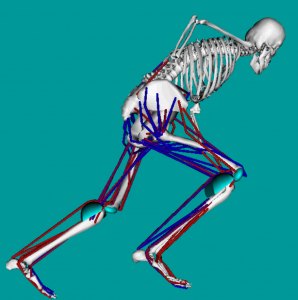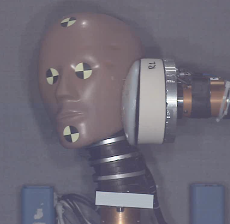Sports Biomechanics
Sports injuries involving impact, injurious environments, and overuse have detrimental effects on athletes. Most sports injuries have a mechanical etiology, and there is a need to understand the biomechanics of these injuries, as well as develop safety gear and guidelines. With the goals of simultaneously improving athlete performance while reducing injury risk, researchers at CAB apply knowledge of biomechanics, experimental design, and computational modeling to understand and mitigate sports injuries. Using state-of-the-art equipment and facilities, we simulate real-world sports impacts in a laboratory. The CAB has ongoing projects in toe, ankle, pelvic, thoracic, head, and brain injuries related to athletes and sports environments.
Projects and Areas of Research
Foot 
- Turf toe—sprain of proximal metatarsophalangeal joint
- Characterized shoe-turf mechanics and studied interplay between natural and artificial turf surfaces and cleat patterns.
- Lisfranc injury—sprain of the tarso-metatarsal joints
Ankle 
- High-ankle sprains—sprain of the tibiofibular ligament
- Developed world’s most advanced finite element model of the ankle/foot for sports injury research
- Generated more bony injuries of the ankle than any other laboratory in the world
- Ankle injury mechanics under axial load, inversion and eversion, plantar-dorsiflexion, and combinations of these motions
Knee and Torso 
- Ligamentous injury of the knee including collateral ligaments, cruciate ligament, and meniscus, as well as mechanics of patellar fracture
- Shoulder range of motion
- Patient-specific model development methods for athletic applications
Head and Neck 
- Contusion mechanics and mitigations
- Brain and skull injury mitigation using helmets
- Role of head-mounted mass in spinal injury mechanics
Sponsors and Collaborators
CAB researchers work with collaborators and sponsors from within the University of Virginia, various universities, companies, and sports teams/leagues using our state-of-the-art techniques and facilities. In providing a mechanical understanding of injury and simulating ways to prevent injury, the CAB is an emerging leader in this field. Researchers are involved in publications, professional consulting, and product development.